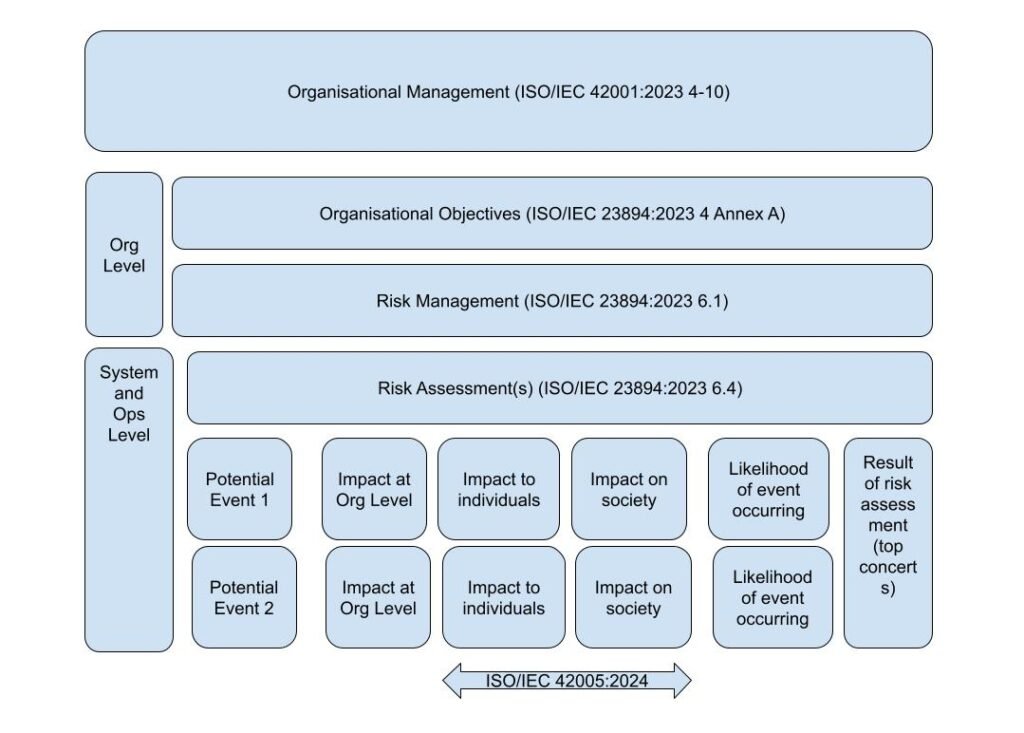A Framework for Effective Decision-Making
As a risk officer, you know that navigating the ever-changing risk landscape can feel like trying to find your way through a complex maze. With new threats emerging all the time, it’s crucial to have a framework in place to guide your decision-making and ensure your organization remains resilient.

The image above depicts a helpful framework for risk management, based on the ISO 31000 standard. This standard provides a set of principles and guidelines that can be adapted to any organization, regardless of size or industry.
The Framework:
The framework is divided into three levels:
- Organizational Level: This level sets the context for risk management within your organization. It includes factors such as your organization’s culture, risk appetite, and strategic objectives.
- System and Process Level: This level focuses on identifying and assessing risks within specific systems and processes. It involves activities such as hazard identification, risk analysis, and risk evaluation.
- Operational Level: This level deals with the day-to-day management of risks. It includes activities such as risk treatment, monitoring, and reporting.
How the Framework Can Help You:
By using this framework, you can:
- Identify and assess risks: The framework provides a systematic approach to identifying and assessing risks, both at the organizational and operational levels.
- Make informed decisions: By understanding the potential impact of risks, you can make informed decisions about how to mitigate them.
- Communicate effectively: The framework provides a common language for discussing risks with stakeholders, which can help to improve communication and collaboration.
- Improve risk management performance: By following the framework, you can continuously improve your organization’s risk management practices.
Getting Started:
If you’re not already using a risk management framework, I encourage you to consider adopting the ISO 31000 standard. It’s a flexible and adaptable framework that can be tailored to meet the specific needs of your organization.
Here are some tips for getting started:
- Get buy-in from senior management: It’s important to get buy-in from senior management before implementing any new risk management framework. Explain the benefits of the framework and how it can help the organization achieve its objectives.
- Assemble a risk management team: Put together a team of people from different parts of the organization to represent diverse perspectives and expertise.
- Train your team: Make sure your team is familiar with the ISO 31000 standard and the risk management framework.
- Start small: Don’t try to implement the entire framework at once. Start by focusing on a few key areas, such as identifying and assessing the most critical risks to your organization.
By following these tips, you can begin to navigate the risk management maze with more confidence and clarity.
Additional Tips:
- Remember that risk management is an ongoing process. It’s important to regularly review and update your risk management framework as your organization and the risk landscape evolve.
- There are many resources available to help you implement a risk management framework, including the ISO 31000 standard itself, as well as guidance from professional organizations and consultants.
- Don’t be afraid to seek help from others. There are many experts in risk management who can provide you with guidance and support.
By taking a proactive approach to risk management, you can help your organization to thrive in an increasingly uncertain world.
